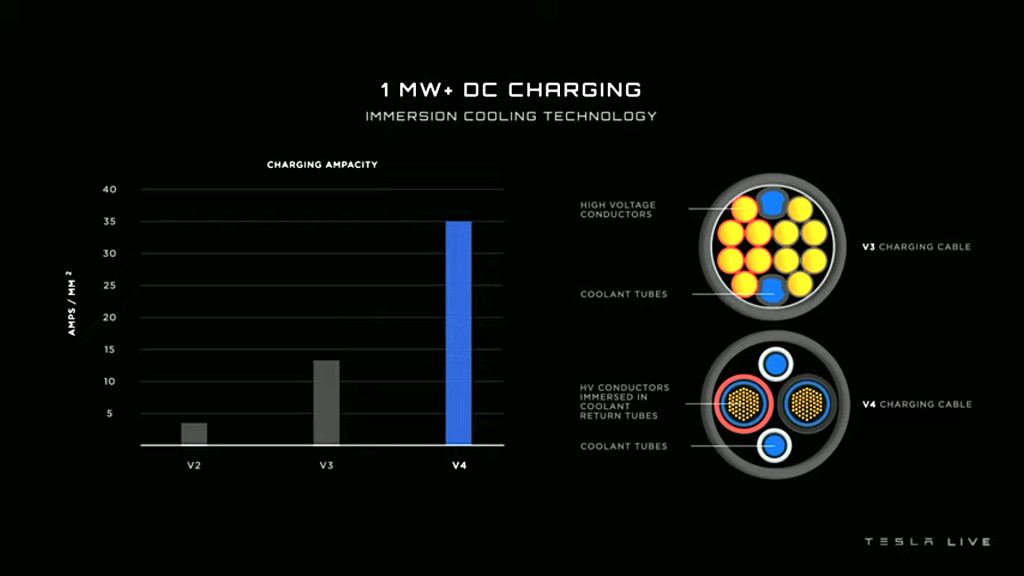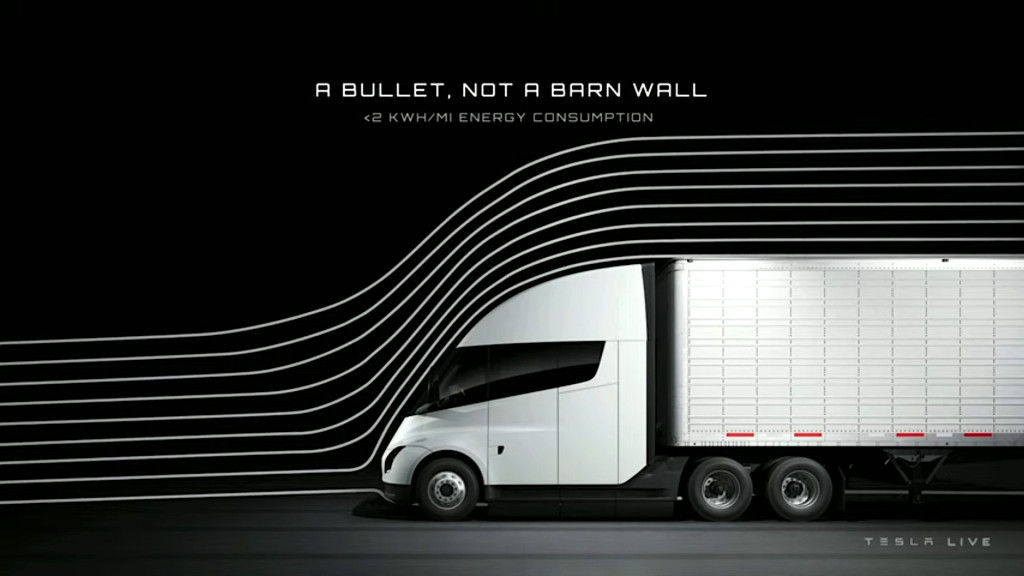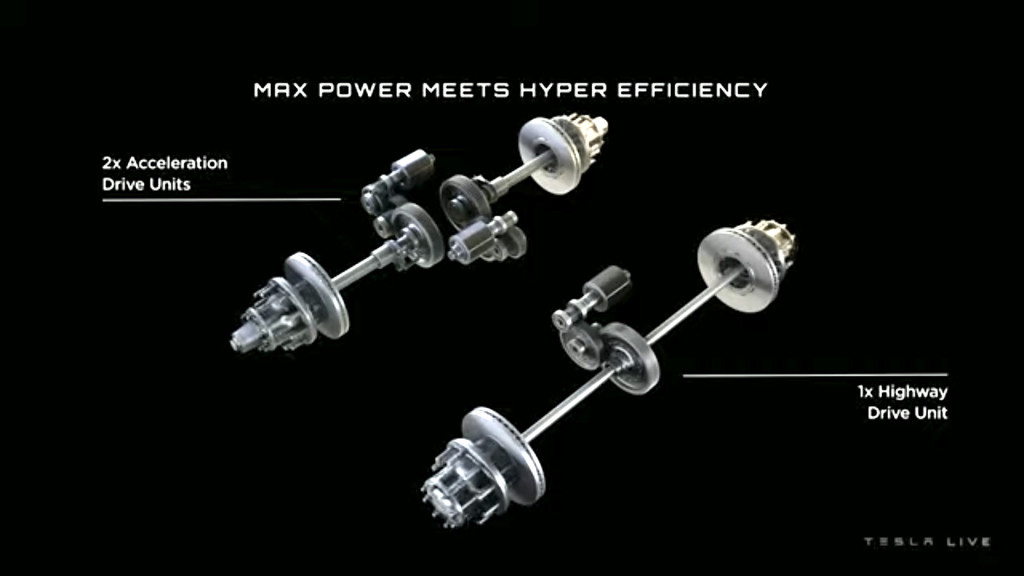Tesla confirmed that it plans to use a new immersive cooling method for its Supercharger V4 charging cable, capable of handling up to 1 megawatt.
“It’s going to be used for Cybertruck, too,” Tesla CEO Elon Musk said on Thursday night. The tech upgrade is coming to Superchargers next year, he added.
Tesla didn’t confirm that either the Semi or the Cybertruck will be able to charge at 1 megawatt from the outset, but the announcement does effectively dismiss the possibilities of either a separate Megacharger ecosystem or Tesla’s early adoption of the Megawatt Charging Standard, or MCS.
As Tesla outlined last month, its charging connector, now called NACS, is good for up to 1 megawatt with a new configuration of the same connector. Musk didn’t provide any demonstration of how much heavier or more cumbersome V4 will be to handle at stops on the Tesla Supercharger network.

Tesla Supercharger V4 cable, for up to 1 megawatt
The announcement leaves a lot of room for elaboration regarding how Tesla actually plans to incorporate charging options for its Semi, which wouldn’t fit at many existing Supercharger stations. Tesla’s senior charging policy manager Francesca Wahl said in October, at the CharIn North America Conference in Portland, that Supercharger sites likely would not be used as heavy-duty (Semi) sites anytime soon. The company has suggested over the years that it was looking to deploy supporting infrastructure for the Semi with other parties.
The purpose of the Thursday night event was to mark the first delivery of the big electric hauler to Pepsi. Although Tesla omitted many key details like the battery pack size, pricing, or how the production rate will ramp up, it did include a bit more about the propulsion tech the Semi uses to achieve its combination of power and range.

Tesla Semi aero
The Semi is built on a new 1000-volt system, yet it uses Tesla’s heat pump, climate system, and inverter tech already made at volume. Aerodynamics play a key role in optimizing efficiency and range.
Tesla also confirmed in its recent 500-mile run from Fremont to San Diego, fully loaded at more than 80,000 pounds, that it didn’t charge along the way or game the run.
As Musk underscored, it’s essentially using the tri-motor Plaid Model S and Model X powertrain, with two of the three drive units totally disconnected except when accelerating. All the work with integration, traction systems, software and control was done in-house.

Tesla tri-motor Semi powertrain
The Semi “has crazy power compared to a diesel truck,” said Musk, who also said seeing the Semi go unloaded is “like an elephant moving like a cheetah.”
Tesla claims that the Semi can make a huge impact for the environment and health—particularly in cities. In the U.S., there are 15 million passenger vehicle sales and roughly 200,000 big commercial trucks sold per year, but the trucks constitute 20% of vehicle emissions and more than a third of particulate emissions.
That includes the company’s own logistics. It confirmed that it will deploy more Semis to use for its own passenger vehicle delivery—which at its present rates must require a great many internal combustion trucks.













